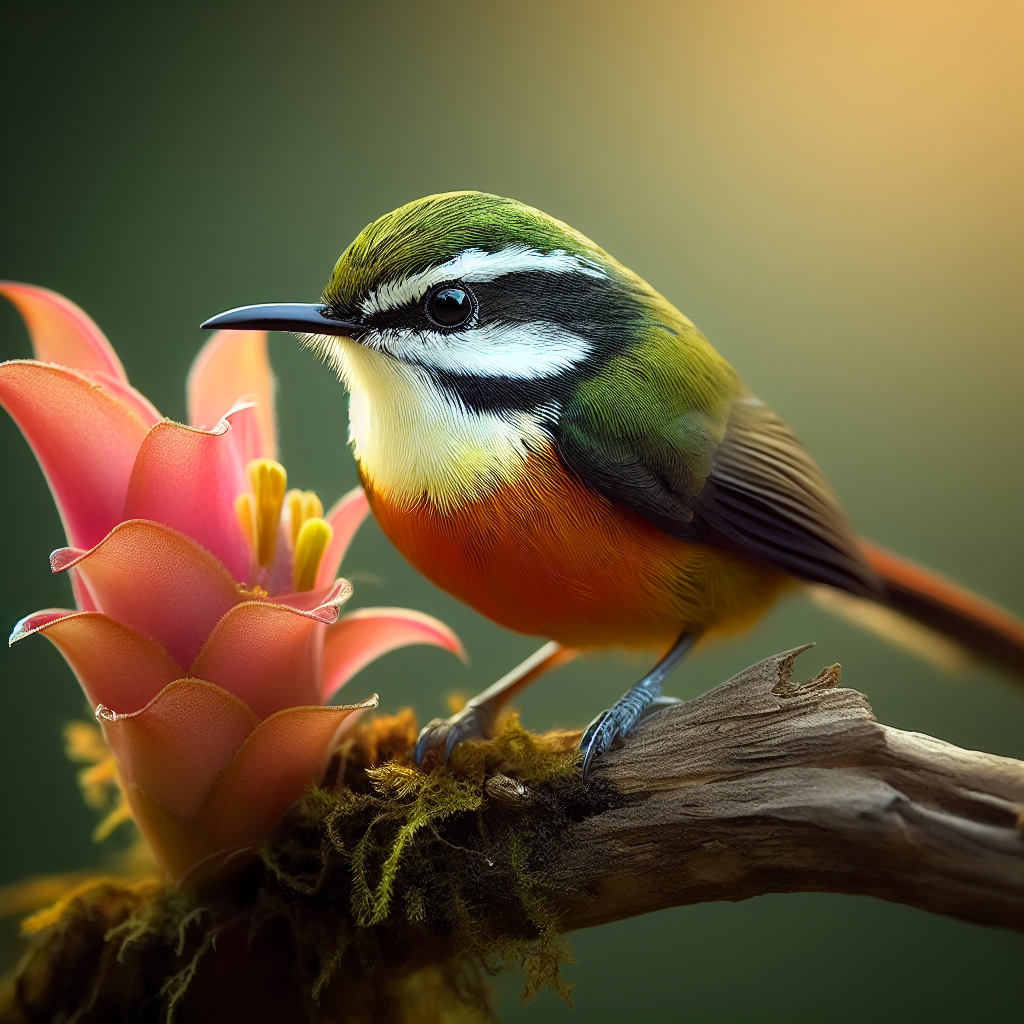Most beautiful small birds - Sykalo Eugen 2024
Nectariniidae
Identification:
- Family name: Nectariniidae
- Order: Passeriformes (Songbirds)
- Subclass: Neornithes (Modern birds)
- Class: Aves (Birds)
Description:
- Size: Petite gems, averaging about 9-22 cm (3.5-8.5 in) long with wingspans around 12-25 cm (4.7-9.8 in).
- Body shape: Slender and agile, with long, slightly downcurved beaks perfect for probing deep into flowers, short legs, and often forked tails that flit like butterflies.
- Plumage color: A kaleidoscope of iridescent hues, often shimmering greens, blues, purples, reds, and yellows. Males typically brighter and more elaborately adorned than females.
- Long, slightly downcurved beaks, often black or reddish.
- Short, black or grayish legs.
- Large, dark brown eyes.
Behavior:
- Method of feeding: Primarily nectarivorous, hovering gracefully at flowers and extracting nectar with their brush-tipped tongues. May also eat insects, spiders, and small fruits.
- Reproduction: Build cup-shaped nests in trees, shrubs, or even hanging platforms. Lay 1-3 glossy eggs, often with dark speckles. Both parents care for the young.
- Movement: Resident in some areas, migratory in others. Some species exhibit complex social behaviors, including territoriality and song displays.
- Communication: Loud, high-pitched songs and calls, varying greatly by species. Some males have elaborate courtship displays involving hovering, fanning their tails, and singing.
Ecology:
- Habitat: Diverse, including tropical rainforests, savannas, woodlands, gardens, and even deserts. Prefer areas with ample flowering plants.
- Diet: Primarily nectar, but also insects, spiders, worms, and small fruits.
- Hunting methods: Hover at flowers and probe deep into blossoms with their long beaks to reach nectar. May also glean insects from leaves and branches or catch them mid-air.
Distribution: Widespread in the Old World tropics, from Africa to Asia and Australasia.

The Nectariniidae, also known as sunbirds, are a feathered kaleidoscope painting the tropics with bursts of iridescent jewels and acrobatic feats. These tiny dynamos might seem like simple flower feeders at first glance, but beneath their dazzling plumage and seemingly delicate wings lies a treasure trove of surprising facts and adaptations that will transform them into captivating aerial acrobats, hidden feast masters, and unexpected social swingers in your eyes.
Masters of the Aerial Ballet: Forget clumsy hops; sunbirds reign supreme in the domain of sun-dappled branches and vibrant blossoms. Their powerful wings and surprisingly acrobatic skills propel them through the air with breathtaking agility, hovering like feathered helicopters and darting in and out of flowers with the precision of miniature fighter jets. Imagine them as sky ballet dancers with built-in miniature jetpacks and an innate love for high-wire performances amidst floral bouquets.
Hidden Feasting Technique: Don't underestimate their dietary flexibility! While nectar is a staple, sunbirds are opportunistic omnivores, readily adapting their menu to seasonal bounty. From juicy fruits and pollen to small insects and even the occasional spider, their varied appetite keeps them fueled for energetic foraging sessions. Think of them as feathered tropical gourmands with built-in miniature buffets hidden within the sunlit canopy.
Dancing with Dazzling Plumage: Their calls aren't just chirps and whistles. Sunbirds possess a rich and distinctive repertoire, with clear, piping songs, intricate trills, and even a signature "chik-chik" duet call that echoes melodically through the foliage. But their true mastery lies in their breathtaking plumage. Males often sport iridescent feathers that shimmer like living jewels, catching the sunlight in kaleidoscopic displays as they perform intricate dances and aerial chases, captivating not just mates but potential rivals as well.
Unexpected Social Swingers: They're not always solitary singers. During foraging adventures and breeding seasons, sunbirds often form loose and playful flocks, flitting through the foliage in flashes of iridescent emerald and sapphire. These feathered skydivers, in playful mid-air chases and synchronized dives, paint fleeting patterns of turquoise and green across the forest canopy.
Champions of Ecosystem Health: They're not just colorful residents. Sunbirds play a vital role in the health of tropical ecosystems. Their pollination services are crucial for plant reproduction, while their insect feasting controls pest populations, making them feathered forest doctors with built-in miniature pollen-spreading tools and environmental beautification kits.
Cultural Charmers: Across Africa, Asia, and Australasia, sunbirds have held diverse cultural significance. In some regions, their iridescent plumage inspires admiration for their beauty and vibrancy. In others, their agility and skill as pollinators are seen as symbols of success and prosperity.
Unexpected Regional Variations: Did you know? Not all sunbirds are the same! Different populations across their vast range show a staggering variety of plumage colors, beak shapes, and even feeding techniques, adding a touch of feathered diversity to this adaptable family.